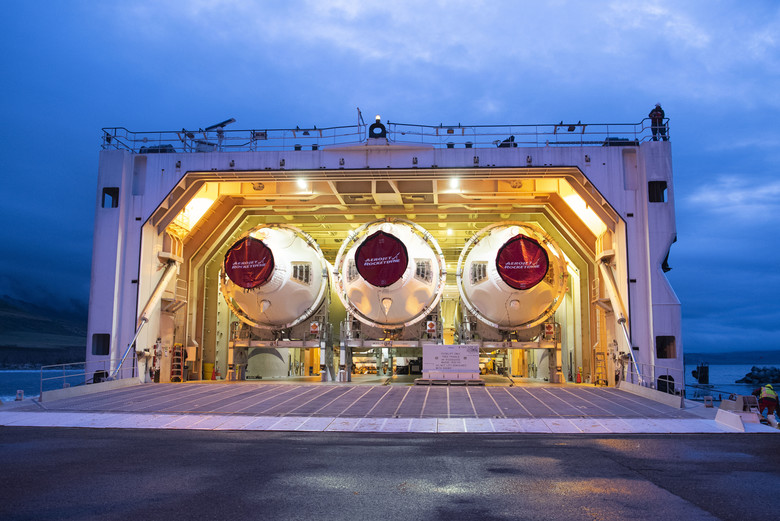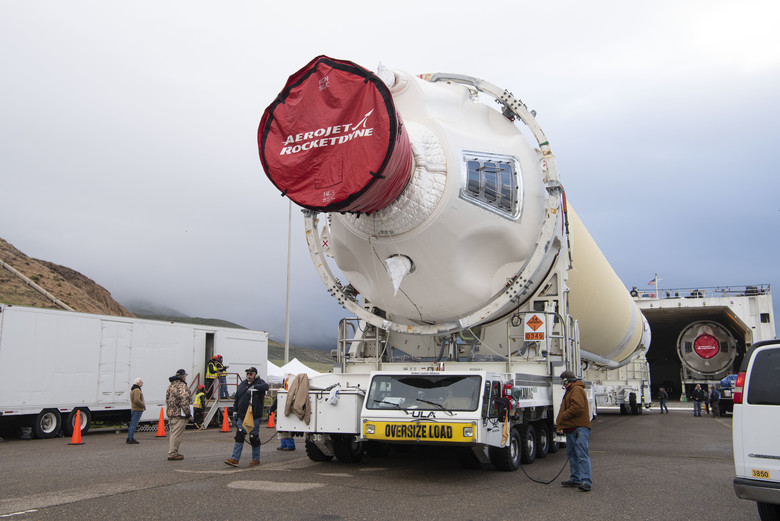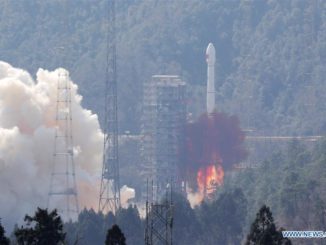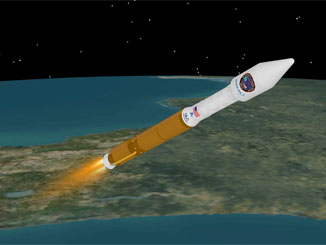
United Launch Alliance’s rocket transport ship has delivered a Delta 4-Heavy rocket to Vandenberg Air Force Base in California in preparation for launch of a U.S. government spy satellite late this year.
The Delta 4-Heavy’s three first stage boosters — known as Common Booster Cores — second stage and payload fairing arrived at Vandenberg on April 5 aboard ULA’s ocean-going transport vessel, named RocketShip.
The rocket delivery occurred during the global coronavirus pandemic, which has affected numerous sectors of the economy. But the federal government has deemed aerospace and defense-related businesses, including ULA, as essential functions that must continue operations during the public health crisis.
“We are continuing to work with our launch partners to ensure the Western Range remains postured to launch,” said Col. Anthony Mastalir, commander of the 30th Space Wing at Vandenberg Air Force Base, located around 140 miles (225 kilometers) northwest of Los Angeles.
“COVID-19 may be the threat at the forefront of everyone’s mind, and we are certainly taking all the necessary precautions to address that threat, but make no mistake, our national security still depends on our ability to launch rockets,” Mastalir said in a statement.
“We have been anticipating and planning this operation in coordination with ULA for several months,” said 1st Lt. Jasmine Toye, 2nd Space Launch Squadron mission integration manager. “No matter the circumstances, we have one job: perform the mission. Now is no different.”
ULA and military crews offloaded the Delta 4-Heavy rocket hardware over a six-day process and transferred the components to ULA’s Horizontal Integration Facility. Inside the horizontal hangar, ULA personnel will connect the rocket’s three Common Booster Core first stage elements to form a triple-body configuration and install the Delta 4-Heavy’s second stage over the next several months.
Then ULA will roll the rocket to Space Launch Complex-6, the Delta 4’s West Coast launch pad, and raise it vertical for a cryogenic fueling test and other checkouts. Finally, the Delta 4-Heavy’s classified National Reconnaissance Office payload and its launch shroud will be hoisted atop the rocket to cap assembly of the launch vehicle.
The Delta 4-Heavy rocket is being prepared for the NROL-82 mission scheduled for launch from SLC-6 at Vandenberg some time between Oct. 1 and Dec. 31 of this year.

The Delta 4-Heavy rocket is built at ULA’s factory in Decatur, Alabama, and transported to launch sites at Cape Canaveral for Vandenberg aboard the company’s RocketShip vessel. For trips to Vandenberg, the RocketShip sails down river channels to the Gulf of Mexico, then traverses the Panama Canal and sails northward in the Pacific to the spaceport on California’s Central Coast.
The NROL-82 mission scheduled for launch late this year will be 13th flight of a Delta 4-Heavy rocket — the largest vehicle in ULA’s current fleet — since debuting in 2004.
Another NRO spy satellite mission, designated NROL-44, is scheduled for launch on the 12th Delta 4-Heavy rocket in June from Cape Canaveral. That rocket is already stacked on pad 37 at Cape Canaveral and has completed a cryogenic fueling test before receiving its classified spy satellite payload in the final weeks before launch.
There are five Delta 4-Heavy rockets in ULA’s backlog remaining to launch through late 2023, all slated to loft NRO spy satellites into orbit.
The Delta 4-Heavy’s Common Booster Cores are each powered by a hydrogen-fueled Aerojet Rocketdyne RS-68A main engine. The three engines will generate 2.1 million pounds of thrust during launch.
The rocket’s second stage has a single Aerojet Rocketdyne RL10 engine, which also burns super-cold liquid hydrogen.
Email the author.
Follow Stephen Clark on Twitter: @StephenClark1.



